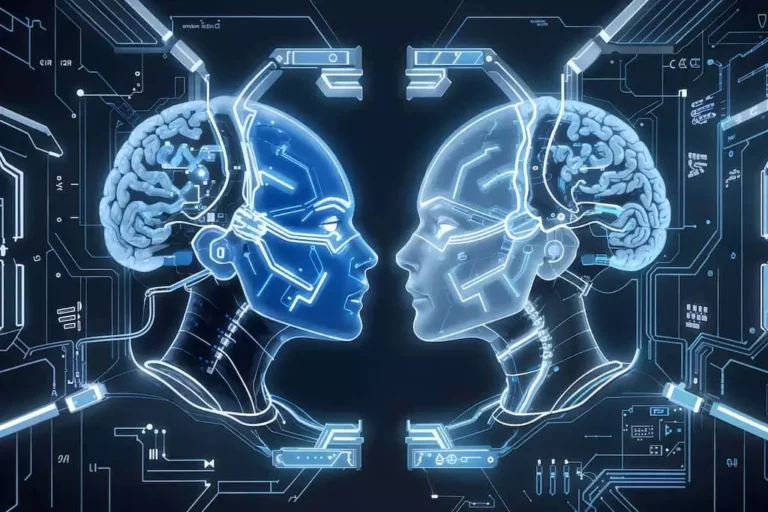The following code offers an example of the method to build a custom RNN cell that acceptssuch structured inputs. In TensorFlow 2.0, the built-in LSTM and GRU layers have been up to date to leverage CuDNNkernels by default when a GPU is out there. With this change, the priorkeras.layers.CuDNNLSTM/CuDNNGRU layers have been deprecated, and you can construct yourmodel without worrying concerning the hardware it’s going to run on. $n$-gram mannequin This mannequin is a naive strategy aiming at quantifying the likelihood that an expression seems in a corpus by counting its variety of look within the training information. Overview A language model goals at estimating the chance of a sentence $P(y)$. Now that you types of rnn understand how LSTMs work, let’s do a sensible implementation to foretell the costs of stocks utilizing the “Google inventory price” knowledge.
Ability To Handle Variable-length Sequences
There are not any cycles or loops within the community, which implies the output of any layer doesn’t affect that same layer. This capacity allows them to grasp context and order, essential for functions the place the sequence of knowledge factors considerably influences the output. For instance, in language processing, the that means of a word can rely closely on previous words, and RNNs can seize this dependency successfully. At the heart of an RNN is the hidden state, which acts as a form of reminiscence. It selectively retains information from earlier steps for use for processing of later steps, allowing the community to make informed choices based mostly on previous knowledge. There are a quantity of various kinds of RNNs, every various in their construction and software.
Study More About Google Privacy
This is completed such that the enter sequence may be exactly reconstructed from the illustration at the highest level. The illustration to the best may be misleading to many because practical neural network topologies are frequently organized in «layers» and the drawing provides that appearance. However, what appears to be layers are, actually, completely different steps in time, «unfolded» to provide the appearance of layers.
Backpropagation By Way Of Time And Recurrent Neural Networks
A feed-forward community is unable to understand the sequence as each enter is considered to be individual ones. In distinction, for time sequence data, every input depends on the earlier enter. This mannequin will take a excessive chance worth of word or character as output. Unlike ANN, sequence modeling current output relies upon not only on present enter but additionally on the earlier output. Classical neural networks work well on the presumption that the input and output are directly independent of one another, however, this is not all the time the case. This is crucial to the implementation of the proposed methodology and shall be discussed in greater detail under [61–64].
Rnns Vs Feedforward Neural Network

Bidirectional RNNs practice the enter vector on two recurrent nets – one on the common enter sequence and the opposite on the reversed input sequence. The enter gate determines whether or not to let new inputs in, whereas the forget gate deletes the information that isn’t relevant. Sentiment analysis is among the most common applications in the field of pure language processing.

It includes a separate memory unit to retailer the knowledge of the node. It is mainly helpful and utilized where the end result relies on preceding computations. Data preparation is crucial for correct time collection predictions with RNNs. Handling missing values and outliers, scaling data, and creating appropriate input-output pairs are important. Seasonality and trend elimination help uncover patterns, whereas choosing the proper sequence length balances short- and long-term dependencies. Building and training an efficient RNN model for time series predictions requires an approach that balances model structure and training methods.
Among the main the cause why this mannequin is so unwieldy are the vanishing gradient and exploding gradient problems. While training utilizing BPTT the gradients should journey from the last cell all the way to the first cell. The product of these gradients can go to zero or enhance exponentially. The exploding gradients downside refers to the giant improve in the norm of the gradient throughout training.
- Another distinguishing characteristic of recurrent networks is that they share parameters across every layer of the community.
- It begins with proper data preprocessing, designing the RNN structure, tuning hyperparameters, and training the model.
- As a result, recurrent networks need to account for the place of every word within the idiom, and so they use that info to foretell the next word in the sequence.
- We can increase the variety of neurons in the hidden layer and we can stack multiple hidden layers to create a deep RNN structure.
- Backprop then uses these weights to lower error margins when coaching.
Recurrent neural networks (RNN) are a category of neural networks that is highly effective formodeling sequence knowledge such as time collection or pure language. Bidirectional RNNs are designed to process input sequences in each ahead and backward directions. This allows the network to capture both past and future context, which can be helpful for speech recognition and natural language processing duties. In a typical RNN, one input is fed into the community at a time, and a single output is obtained. But in backpropagation, you employ the present in addition to the earlier inputs as input. This is called a timestep and one timestep will consist of many time collection data factors coming into the RNN concurrently.

The independently recurrent neural network (IndRNN)[87] addresses the gradient vanishing and exploding problems in the conventional absolutely connected RNN. Each neuron in a single layer solely receives its own previous state as context information (instead of full connectivity to all different neurons in this layer) and thus neurons are unbiased of each other’s history. The gradient backpropagation could be regulated to keep away from gradient vanishing and exploding in order to keep long or short-term memory. IndRNN can be robustly trained with non-saturated nonlinear functions similar to ReLU.
A feedback loop is created by passing the hidden state from one time step to the subsequent. The hidden state acts as a reminiscence that stores details about previous inputs. At every time step, the RNN processes the present enter (for example, a word in a sentence) along with the hidden state from the earlier time step. This permits the RNN to «bear in mind» earlier data factors and use that data to affect the present output. We can improve the number of neurons in the hidden layer and we are in a position to stack multiple hidden layers to create a deep RNN structure. Unfortunately easy RNNs with many stacked layers can be brittle and tough to train.
RNN algorithms are behind the scenes of some of the superb achievements seen in deep learning. Recurrent neural network (RNN) is a type of neural community where the output from earlier step is fed as input to the current step. Thus RNN got here into existence, which has solved problem with the usage of a hidden layer. The primary and most important characteristic of RNN is hidden state, which dwell upon some details about a sequence [17].
The other two types of courses of synthetic neural networks embrace multilayer perceptrons (MLPs) and convolutional neural networks. However, RNNs’ weak point to the vanishing and exploding gradient problems, together with the rise of transformer models similar to BERT and GPT have resulted in this decline. Transformers can capture long-range dependencies much more effectively, are simpler to parallelize and perform better on duties corresponding to NLP, speech recognition and time-series forecasting. These are commonly used for sequence-to-sequence tasks, such as machine translation. The encoder processes the enter sequence into a fixed-length vector (context), and the decoder uses that context to generate the output sequence. However, the fixed-length context vector could be a bottleneck, particularly for long enter sequences.

The state is also referred to as Memory State because it remembers the previous input to the network. It uses the identical parameters for each enter as it performs the same task on all the inputs or hidden layers to supply the output. This reduces the complexity of parameters, in distinction to other neural networks. Suppose a deeper network consists of one enter layer, three hidden layers, and one output layer.
By feeding the output of 1 layer to itself and thus looping by way of the exact same layer a quantity of instances, RNNs enable information to persist through the whole model. Two categories of algorithms which have propelled the sphere of AI forward are convolutional neural networks (CNNs) and recurrent neural networks (RNNs). Compare how CNNs and RNNs work to know their strengths and weaknesses, including the place they will complement each other. Bidirectional recurrent neural networks (BRNNs) are one other kind of RNN that simultaneously study the ahead and backward directions of information move. This is completely different from standard RNNs, which only be taught information in one direction. The process of each directions being discovered simultaneously is called bidirectional data circulate.
Forget fragmented workflows, annotation tools, and Notebooks for constructing AI purposes. Encord Data Engine accelerates every step of taking your mannequin into production. Monitor, troubleshoot, and evaluate the info and labels impacting model efficiency.
Transform Your Business With AI Software Development Solutions https://www.globalcloudteam.com/
